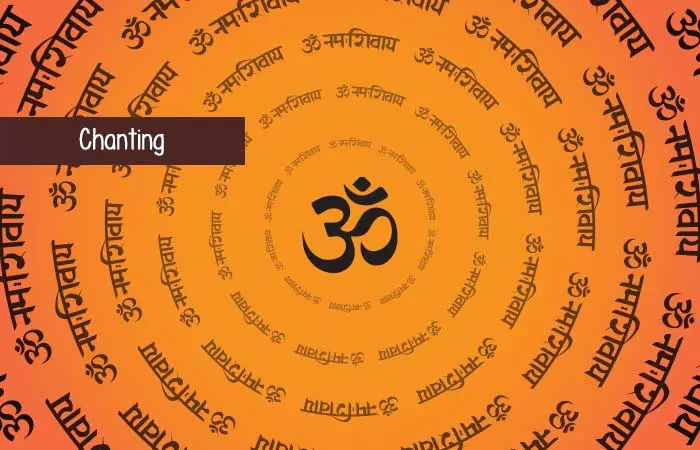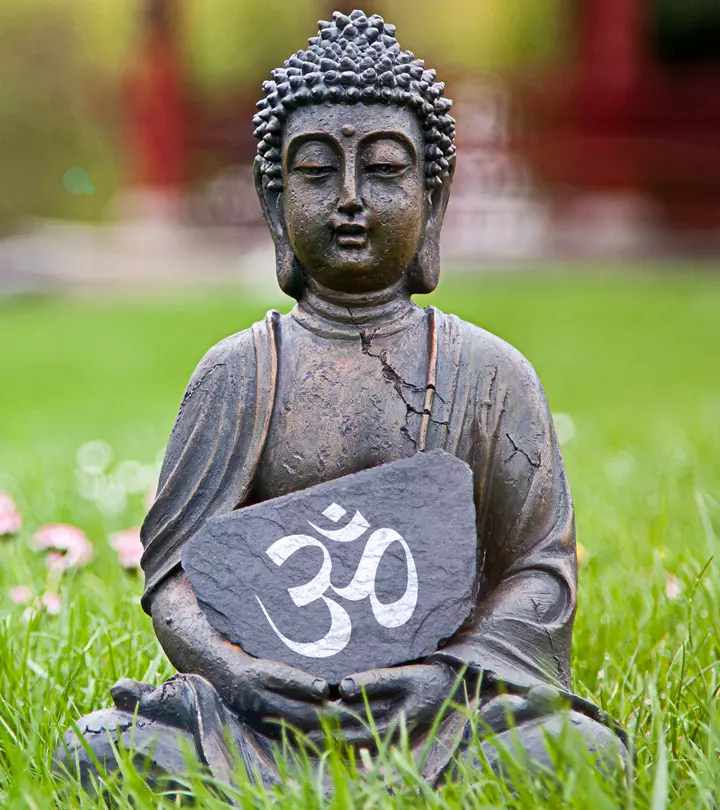Shiva Meditation – What Is It And What Are Its Benefits?
Take control of your thoughts effortlessly as you relax and achieve a state of tranquility.

Image: Shutterstock
One of the major benefits of Shiva meditation is that it helps you replicate the absolute stillness of the Lord Shiva
. As they say, you cannot separate meditation from Shiva and vice versa. He is considered the Lord of Meditation. In fact, all of his portraits depict him in a deep meditative state.
This meditative technique helps you open your third eye and get your mind functioning at its full potential. It helps you take control of your mind and keep away thoughts that unsettle you.
It is also said to help you evolve as a person, improve mindfulness and conduct your daily-to-day life meaningfully. Moreover, our great yogis have called this meditation a life-changing process as it helps to achieve a sense of self-awareness.
In this article, we explore what this meditative technique is all about, the steps involved, and its benefits. Keep scrolling.
In This Article
What Is Shiva?

Shiva is Adiyogi – the first guru of yoga. A yogic lore mentions that over 15,000 years ago, he attained enlightenment and danced ecstatically on the Himalayas and created 84 lakh asanas with his movements.
But, when you ask somebody what Shiva is, there is no single answer. And, that’s the beauty of Shiva. Shiva is universal consciousness. And, realizing that you are one with it is the trick to help you understand the workings of the world.
Channeling such an intense cosmic energy associated with Lord Shiva will only elevate your consciousness and spiritual practices. Shiva is worshiped in various forms and has numerous names.

He is a yogi, a cosmic dancer, a family man, an ascetic, etc. Shiva is also widely represented in the aniconic form of ‘lingam.’ But, at the highest level, he is a formless and limitless primal soul of the universe.
He is called by various names like Shankar, Shambho, Maheshwar, Mahadev, Bhairav, etc. Shiva’s symbolic representation is that of a muscled man clothed in tiger skin with snakes adorning his body and ash smeared on it.
He carries a spear called the ‘Trishul’ and a drum called the ‘Damaru.’ His neck is blue, and he has long, thick, matted locks. Ganga flows from his head, and the moon shines from the top of his head.
He has a third eye, which is essentially the mind’s eye that enables perceiving and understanding of the self and the world at a subconscious level. Shiva Meditation helps open your inner eye and strikes a connection with the divine.
Let’s take a look at its procedure now.
Key Takeaways
- Shiva mediation involves focusing on your breath and in the center of the eyebrows to attain awareness and inner peace.
- Try some asanas before sitting in meditation as it will enhance the meditative experience.
- It may increase your stamina.
- It may alleviate the tension in your muscles and strengthen immunity.
The Shiva Meditation Technique
1. Preparation

First thing – stretch. Yes, that will help you sit comfortably without feeling any tension or stiffness in the body. Make sure you stretch your back, hips, buttocks, shoulders, thighs, and feet. Try asanas like Paschimottanasana, Utthita Padahastasana, Baddha Konasana, Vajrasana, etc.
Then, find a place that is not noisy and where you can hear the sounds of nature, like the birds chirping and the wind whooshing. Wear comfortable clothes, something that is suitable for the weather so that you don’t sweat or feel cold.
Switch off all gadgets and finish any immediate tasks so that when you meditate, nothing will distract you or cause a need to end the spiritual meditation hurriedly.
 Quick Tip
Quick TipYou may listen to Classical music, Zen music, Ambient music, Binaural tones, or Isochronic tones while doing Shiva meditation to avoid the noises of everyday life.
2. Sitting Position

Sit comfortably, whether it is down, on a chair, or leaned against a wall. Keep your back straight, but not abnormally straight.
Place your hands in a comfortable position or mudra either on the knees or clasped together near the insides of the inner thighs.
When you sit down, assume the Sukhasana, Padmasana, Ardha Padmasana, or the Vajrasana.
Make sure you are comfortable in the pose or make adjustments so that your sitting position doesn’t distract you from the meditation.
3. Breathing

Breathe slowly and consciously, feeling its movement. Inhale on the count of 6, hold the breath for 6 counts, and exhale it on the count of 6.
Focus on how the air is going in, staying in the body, and coming out. Give complete attention to it and get back to it whenever your concentration wavers.
Feel the life force filling your body when you inhale, become aware of the pause between the inhalation and exhalation, and when you exhale, forget the concept of the self and the body and feel oneness with everything around you.
4. Visualization

Breathing in the above manner can help infuse a sense of calmness and stillness in you. Follow it up by feeling the area in between your eyebrows. And while doing so, visualize Shiva in whichever form he occurs in your mind.
It could be Nataraja, the cosmic dancer, Adiyoga, the meditating monk, or Ardhanarishwara – the embodiment of male-female aspects. Feel his presence and aura. Be completely taken by it.
Think of nothing except Shiva. Let Shiva engulf you.
5. Chanting

In an attempt to merge with Shiva, invoke his name. Chant ‘Om Namah Shivaya,’ which means to call upon Shiva with reverence. This mantra is believed to be first spoken by Lord Vishnu.
Om is a primordial sound. It is the first sound of creation. Uttering Om is echoing creation, life, and energy. ‘Namah Shivaya’ is offering devotion to Shiva. The na, ma, shi, va, and ya in ‘Namah Shivaya’ also represent the five elements of the universe. These include the earth, water, fire, air, and ether.
Chant ‘Om Namah Shivaya’ continuously at a pace that you find suitable. The mantra will help you feel Shiva within yourself. Continue till you feel merged with Shiva, where there is no self, and you are Shiva, and Shiva is you.
6. Blissing Out

Stay in this moment of absolute bliss where you experience divinity. Let it remove the clutter in your mind and help you gain a single-pointed focus.
Rub your palms together and place them on your closed eyes. It fills you with a sense of love and joy for the divine.You will feel feather light as a result of overcoming the weight of yourself. Let that feeling sink in completely and then slowly open your eyes to conclude the meditation. This procedure might take anywhere between half an hour to a couple of hours.
 Quick Tip
Quick TipNow, let’s acquaint ourselves with the numerous benefits of Shiva Meditation.
Benefits Of Shiva Meditation
- Shiva Meditation induces a deep state of calm and relaxation.
- Unnecessary thoughts are wiped off from your mind with this meditation.
- It increases your stamina and stabilizes your blood pressure.
- Shiva Meditation eases your tensed muscles and strengthens your immune system.
- It helps you lose weight and get over your addiction.
- It slows down the aging process and builds tremendous confidence.
- Shiva Meditation helps you let go of all your fears and phobias and provides stress relief.
- It helps you gain control over your thoughts.
- It improves your memory and helps better your relationships by practicing gratitude.
- Shiva Meditation helps you react lesser to unnecessary issues.
- It helps you deal better with your problems instead of becoming restless. This reduces stress and anxiety.
- It helps you discover the purpose of your life.
- Shiva Meditation helps you practice compassion, become forgiving and one with God.
- It promotes emotional balance.
Engaging in Shiva meditation helps establish a connection with one’s spirituality and enhances the bond with oneself. In a 2025 YouGov survey involving 1,000 adults in the United States, 41% of respondents identified themselves as both religious and spiritual, while 24% identified as spiritual but not religious. Furthermore, 40% of participants regarded spirituality as a “very important” aspect of their lives. In terms of specific practices, 26% of respondents had engaged in meditation, 21% had practiced mindfulness, and 16% had experienced yoga at least once in their lifetime.
Frequently Asked Questions
How often do I practice Shiva Meditation?
Practice Shiva Meditation every day for best results.
How do I train myself to sit focused for long durations in Shiva Meditation?
Sitting focused for an adequate amount of time in Shiva Meditation is a challenge. Start with 5 to 10 minutes and slowly increase the duration with time and practice.
Which mantra is powerful for Shiva?
Other than the shiva moola mantra, the shiva gayatri mantra is considered the most powerful for pleasing Lord Shiva.
What happens when you first meditate?
You become relaxed and peaceful when you start meditating. Though it may be difficult to focus initially, you can notice the changes once you make it a habit to meditate daily.
Can I meditate with music?
Yes, meditating with music can help you deepen the positive effects and bring more calm and peace to the self. It may also help increase concentration while meditating.
Should I meditate before bed?
You can meditate whenever you feel like it. Meditating before bed may help calm your mind and promote better sleep.
Is meditation done empty stomach?
Meditating on an empty stomach has its advantages. It keeps your mind alert and facilitates air movement in your stomach while deep breathing, which is a bit tough when your stomach is full.
Infographic: How To Do The Shiva Meditation Technique
The Shiva meditation aids in opening your third eye and promotes smooth mind functioning. It allows you to regain control of your mind and keep unsettling thoughts at bay. Check out the infographic below to learn how to do the Shiva meditation to help you evolve as a person and live your daily life meaningfully.

Illustration: StyleCraze Design Team
Shiva meditation helps take control of your mind and thoughts besides helping you understand your inner self by opening your inner eye. From helping control your blood pressure and inducing a deep state of relaxation to setting you free from fears and improving memory, the benefits of Shiva meditation are a long list to go through. Before starting this meditation, make sure you stretch your body properly to relieve tension from the muscles. Practice it every day while chanting “Om Namah Shivaya” to achieve inner-strength, emotional balance, transform your physical health, increase mental well-being and gain spiritual growth.
Chanting the Om Namah Shivaya mantra brings peace, joy and spiritual growth. Learn the benefits of this powerful mantra and how it can transform your life by watching the video below. Check it out now!
Read full bio of Sri Yogi Anand
Read full bio of Shirin Mehdi
Read full bio of Arshiya Syeda
Read full bio of Moksha Gandhi




























Community Experiences
Join the conversation and become a part of our empowering community! Share your stories, experiences, and insights to connect with other beauty, lifestyle, and health enthusiasts.